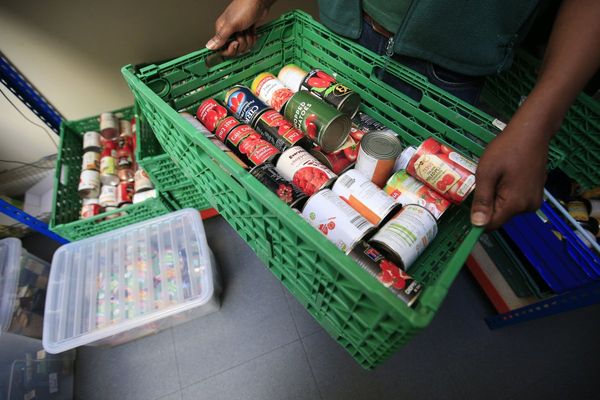
Before I start the article, I would like to report that Thailand's economic performance in January 2023 was no better than the last quarter of 2022, when GDP growth was merely 1.4%.
The Manufacturing Production Index plunged 4.4%, exports (in value) declined 3.4%, and tax revenue was 18.9% lower than the same period a year before. Most concerning of all is the money supply's expansion of 3.8%, which is well below January's inflation rate of 5.02%.
If you are an economist, you will immediately think of the formula MV=PQ. Based on this formula, January's 2023 GDP growth would be minus 1.2%.
Let me note further that, without tourist money of 110 billion baht in that month, January's GDP growth could have been as low as minus 1.7%. Sluggish economic performance in January 2023 emphasises the immediate need for the country to CHANGE, as this might no longer be a short-term phenomenon.
Today's article is the first in the CHANGING THAILAND series. There are five parts to the series: (1) The country needs to change, (2) Managing household debt, (3) Building a middle class and choosing core industries, (4) Investing in education, financing core industries, and (5) Moving towards a welfare economy. The prologue was presented in the previous article.
The table shown provides a shocking and eye-opening fact about the Thai economy. The title of the table, "An Economy Relying on Debt to Grow," tells the story. The table covers six years over three different periods: 2017-2019 (pre-Covid period), 2020-2021 (Covid period), and 2022 (post-Covid period). It shows the economy relies on debt to grow.
The income-producing activities of agriculture, industry and services do not create enough money to sustain GDP. Without additional borrowing by the public sector and households, the economy would have contracted, as one can see in the last row of the table, where the ratio of increased debt/increase in GDP is consistently higher than 1.
For example, take the case of 2019. Due to a legal lending limit problem, the public sector slowed its borrowing to 120.7 billion baht, which is about 340 billion baht less than 2018's borrowing. This caused 2019's nominal GDP growth to be less than the previous year's level by almost the same amount.

I do not have problems with rising public debt. Even at the current level of 60.7% of GDP it is still manageable. The problem is that, theoretically, public debt is meant to spur private sector income. For instance, infrastructure spending would create more employment in the construction sector. Therefore, it bothers me to see private household debt rising alongside public debt, as shown in the 2nd row of the table.
As of the end of the third quarter 2022, Thai household debt to GDP was 86.8%. That's high, but not the highest in the world. Swiss household debt to GDP was 129% and Australian debt to GDP was 119%. Why should Thailand be worried?
Because in all high household debt/GDP ratio countries, most debts are made up of long-term mortgage loans. Out of the 129% of GDP household debt in Switzerland, 119% of GDP is mortgage loans, leaving only 10% of GDP as short-term consumer loans. And out of the 119% of GDP household debt in Australia, 95% of GDP is mortgage loans, leaving 19% of GDP as short-term consumer loans. But here in Thailand, of the 86.8% of household debt to GDP, only 26.4% of GDP is mortgage loans, leaving 60.4% of GDP as short-term consumer loans, which no doubt is the highest in the world.
By any standard, Thailand is already in a short-term household debt crisis.
Mortgage loans are long-term loans, often with a low monthly payment, bearing a low-interest rate, and, most importantly, are fully collateralised. Consumer loans, on the other hand, are short-term with a relatively high monthly payment, bearing a high-interest rate, and uncollateralised.
That is not a full story of the Thai household debt problem. We do have informal debt on top of formal household debt. According to a Bank of Thailand study in mid-2022, 42.3% of surveyed debtors have an average informal debt of 54,300 baht per person. The percentage of debtors with informal debt was only 1.7% two years ago. When financial institutions become hostile after an individual's lending limit is reached, people have no choice but to turn to informal lending sources.
The one trillion-dollar question is, why do Thai people borrow so much? Thailand is a middle-income country with $7,066 (about 237,064 baht) of per capita income, according to World Bank's data in 2021.
The answer is simple. Income does not match expenses.
It begins with this: Most Thai wage earners do not earn that average of 237,064 baht per annum. According to Revenue Department's database, 66.7% of taxpayers have a net income less than 150,000 baht a year. A National Statistical Office survey indicates that Thai workers earn an average 170,000 baht a year or 14,500 baht a month.
Another survey by the office shows average monthly household expenses are 21,329 baht (nationwide average) and 31,142 baht (Bangkok area average). How to fill this monthly income-expense gap? Borrow, borrow, and borrow.
What is next if Thais cannot borrow as lenders, both formal and informal, become cautious amid rising bad debts?
First, the economy as a whole will have slow growth or even contract, as seen in the table, in GDP growth for the fourth quarter of 2022 and the country's economic performance in January 2023.
Second, more young, able-bodied workers will leave Thailand to seek higher wages in other countries, as wages in Thailand are insufficient to support a decent living.
Third, the banking sector will collapse from bad household debts. At present, 1 trillion baht of the 15 trillion baht in (formal) household debt already qualifies as non-performing loans. The actual amount could be much higher as large numbers of bad loans are camouflaged as normal loans under debt restructuring. If the level of bad loans exceeds 3 trillion baht, most banks will have inadequate capital, such as during the Tom Yum Kung crisis.
Fourth, businesses face liquidity shortages from a banking sector crisis.
Household debt in crisis is a sure sign that Thailand needs to CHANGE, and it has to start with solving household debt problems. So, my next article, part two of the series, will be titled "Managing Household Debt".







